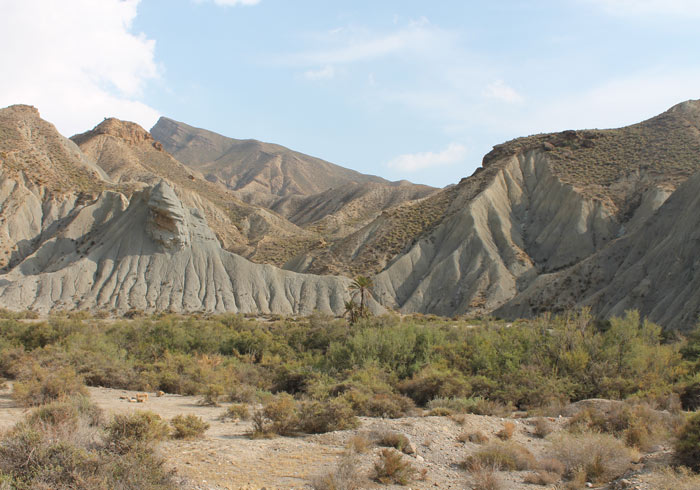Users
Social media
- More details here...
- Address
Parc Científic de la Universitat de València C/
Catedrático Agustín Escardino, 9
46980 Paterna (Valencia) Spain - Email:
iu.i2sysbio@uv.es - Phone:
(+34) 963544810
- Address
Links
New cultivation methods could lead to the discovery of new bacterial species

Investigation
New cultivation methods could lead to the discovery of new bacterial species

A new study of microbiology explored the bacterial diversity of the Tabernas Desert, located in southeastern Spain. Using simple tweaks to traditional bacteria cultivation methods, the researchers isolated more than 250 bacterial strains of which 80 could be possible new species of bacteria.
Microorganisms are the most abundant and diverse form of life on Earth. However, the vast majority of them remain unknown. In fact, only a small fraction of our planet's microorganisms can be cultivated by traditional methods, leaving a world of uncultivable organisms beyond our reach. This is especially true for bacteria that thrive in extreme conditions, since the harsh conditions are hardly reproducible in a laboratory. While some microbial studies have been carried out in the Sahara, Atacama and Gibson deserts, the European arid lands remain little studied.
To finally explore the microbial community of some European deserts, researchers from the Institute of Integrative Systems Biology I2SysBio (Universitat de València-CSIC) and the biotechnology company Darwin Brioprospecting Excellence SL, studied the bacterial diversity of the semi-arid desert. of Taverns. With this objective, the team developed new approaches to bacterial culture.
"Culturomics of the Tabernas desert was the ideal cross between a rare and little-studied environment, and the application of simple but powerful culture techniques, including long incubation times, diluted media and careful selection of colonies," says Manuel Porcar, researcher at the University of Valencia, president of Darwin Bioprospecting Excellence and last signatory of the study.
The researchers experimented with different cultivation methods to find permissive conditions for some non-cultivable species. Their strategy consisted of combining different media, using serial dilutions of the nutrients (up to a hundredfold), and prolonging the incubation time (up to a month). In total, 254 strains of bacteria were isolated. Most species isolated from concentrated media were previously described as soil dwellers or species isolated from other deserts. However, 60% of the strains isolated from the highly diluted media are unidentified and possibly new bacterial species. Furthermore, playing with incubation times also allowed, after one month, to isolate some oligotrophic strains (slow-growing bacteria that live in nutrient-poor conditions) that would otherwise be difficult to grow under laboratory conditions.
Taken together, this study highlights the potential of simple strategies to obtain greater microbial diversity from natural samples, especially if taken from extreme environments. But the unexploited bacterial biodiversity of the Tabernas Desert could have impacts that go far beyond ecology and bacteriology: "We are currently characterizing several of the unidentified bacteria, three of them are new species of Kineococcus. I am sure that some bacterial strains produce biotechnologically relevant products. It is just a matter of carrying out the right selection," says Dr. Porcar.
Source: Lucie Sammicheli for Frontiers Science News


